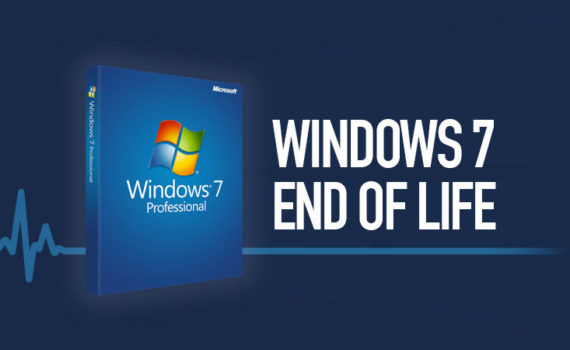
Windows 10: Why it’s finally time to upgrade from Windows 7
Category:UncategorizedFrom CNET:
Support for Windows 7 ends in January 2020. For security, software updates and other reasons, it’s time to stop procrastinating.
The end is near for Windows 7 users: After 10 years, Microsoft will stop supporting the OS on Jan. 14, 2020, which means it’s time to upgrade to Windows 10 to keep your PC running smoothly and securely. (Extended support for Windows 8.1 users ends in January 2023.)

Security
The need to upgrade to Windows 10 is “primarily a security issue,” said Forrester Research analyst Andrew Hewitt. If you are still using Windows 7 or earlier versions come January, Microsoft will not provide security updates or fixes, or technical support for any issues — leaving your computer at greater risk from viruses and malware.
Windows 10 includes the built-in Windows Defender Antivirus to protect against malware and spyware across email, apps, the cloud and the web. Windows Hello offers a password-free sign in option to unlock your devices with your face or a fingerprint reader. And a Find My Device service can lock and erase your Windows device remotely, or map the location of your device.
Read more: 6 simple security changes all Windows 10 users need to make
User experience features
Windows 10 offers a better user experience thanks to a number of features, Kleynhans said. One is the Your Phone app, which allows you to access texts, notifications and apps on your phone using your PC — similar to Apple’s Continuity features. A feature called Calls allows you to place and answer Android calls on your PC as well (and you can connect your iPhone to your Windows PC as well). A dictation feature lets you easily record ideas.
Microsoft’s digital assistant Cortana is also available on Windows 10 PCs. The OS also integrates better with Microsoft OneDrive and other cloud tools, Kleynhans said.
The most recent Windows 10 November 2019 update includes some new features such as changes to notifications that will make them easier to configure and manage from an app or website, and the ability to create events directly from the Calendar flyout on the Taskbar, instead of opening the app.
Automatic updates
Unlike previous versions, Windows 10 offers automatic updates by default, to keep systems more secure. (You can turn these off if you want to, by going to Windows Update Settings > Advanced Options and changing from Automatic to another option in the drop-down menu.)
“While some users might actually think that getting no more annoying updates is a blessing, it actually would pretty quickly expose the user to all sorts of potential malware attacks,” Kleynhans said. “The good news is that for the most part Windows 10 is a pretty smooth upgrade for the vast majority of users.”
You can expect updates to happen fairly frequently, Hewitt said, “almost as if you’re using an Android or an iOS device and getting prompts to continuously update the operating system.”
How to upgrade to Windows 10
You can download Windows 10 via Microsoft’s website. While Microsoft technically ended its free Windows 10 upgrade program in July 2016, our sister site ZDNet reported that at least as of September, the free update was still available for Windows 7, 8, and 8.1 users.
